I am not a “prepared mom”. If you are looking for the mom that keeps a sewing kit tucked in her purse for emergencies or the mom with a well planned summer activity schedule and playdates, I am not her. Heck, if you are looking for the mom that shows up on time and knows what’s going on at school events a solid twenty percent of the time I’m not that mom either! I tend to be pretty lax in my preparation for all that motherhood holds except in one area–emotional intelligence. In our home we talk about knowing, understanding and expressing our emotions in ways that are healthy for ourselves and others. We want to prepare our children for a life filled with all the highs and lows, joys and disappointments, heartbreak and loss that they will meet with some tools to know themselves and bring their best to others.
One of the most common questions I get as a Christian Education pastor is “do you have a book for my child on grief?” Often spurred by the death of a grandparent, but sometimes something more unexpected, parents look for resources to help them navigate difficult conversations with their children. I always say “thank you for reaching out, let me give you a few book suggestions.” But what I also want to say is “I wish you’d come sooner. I know these conversations are hard but your child needs a framework and we practice having hard conversations by having little, hard conversations along the way.” You don’t have to wait until death visits your family or circle of friends to build emotional intelligence in your child to help them understand and process death and grief.
Building emotional intelligence helps your child. One of my biggest pet peeves about adults is the assumption that because children may not have the precise words developed in their native tongue or the same framework of abstract thought adults possess that they don’t feel deeply and understand the nuances of human experience. If we are to take children seriously as their own spiritual beings on their own unique journey, we ought to take seriously that they feel and engage the world in ways we may not understand or they may not be able to articulate.
Building emotional intelligence is also a gift your current parenting self can gift your future self. Conversations around feelings help you and your child develop a common language to communicate, connect and build trust. It helps them build language they can use to alert you to their emotional terrain and needs. It also helps you as the parent identify your child’s unique emotional responses before grief comes to visit your family, so that you know what is “normal” or not for you uniquely created child. Another side effect of teaching emotional intelligence to your children is that teaching others tends to inspire your own self-reflection and build your own emotional intelligence as a parent.
Books have been one of the tools we have used to facilitate conversations around emotional intelligence and grief in an organic and natural way as part of our daily lives. Below I am sharing several books that we have use or I have recommended to parents and a few simple questions or conversation starter suggestions. While many of these books are not explicitly religious or Christian, they can be used as tools and conversation starters to talk about faith. A simple “You know, we go to church and we believe that…” or “In our faith we believe that when you die…”
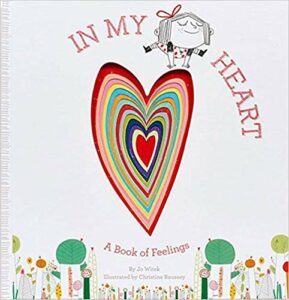 In My Heart: A Book of Feelings by Jo Witek
In My Heart: A Book of Feelings by Jo Witek
This is one of the first books I recommend parents use with very young children to build emotional intelligence. Written with a simple metaphor, bright illustrations and clear language, In My Heart talks about the heart as a house that is home to many different feelings. It then goes through and describes each one. This book is so good for toddlers and preschoolers who are developing big feelings but may lack the words to describe those feelings. When reading this book with children I like to ask “which feelings did you have today?” or “When X, Y or Z happened today, which feelings did you feel?” Which helps them develop self-reflection skills about their feelings and also helps me as the parent or pastor learn more about their day.
 my heart by corinna luyken
my heart by corinna luyken
Many of the books on this list are expository in some way, but my heart is a poem set to beautiful illustrations that talks about the many ways the heart can be hurt or grow. It’s a book you can read with very small children, pointing out and talking about what’s happening in the pictures, or gift to older children and even adults to read. When discussing the book you can ask “when has your heart felt bright?” or “what makes your heart feel like it is growing?”
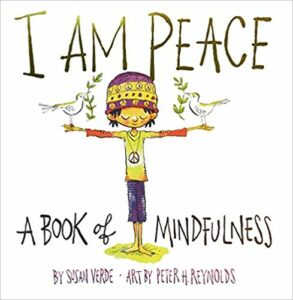 I am Peace by Susan Verde
I am Peace by Susan Verde
I love this book for my own children as well as sharing with parents looking for not just words but strategies to teach children how to manage and process big feelings, specifically feelings of anxiety and nervousness. For those that are familiar with the rich traditions of spiritual practices, this book teaches a nice blend of centering and mindfulness. I am Peace is basically Thich Nhat Hanh for children and it’s a lovely reminder for adults as well on how to quiet the mind and center yourself, while quieting anxious thoughts. This read can be a good discussion starter for asking your kids about what makes them worry.
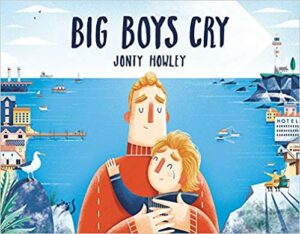 Big Boys Cry by Jonty Howley
Big Boys Cry by Jonty Howley
This new release is the book we have needed for our sons, friends, nephews and grandsons to teach an emotional intelligence that combats toxic masculinity. Big Boys Cry teaches that all men cry and for a variety of reasons–joy, sorrow, grief, surprise, laughter. The illustrations are bright and interactive and lead to great conversation about all the different feelings we have and how it’s ok to cry when you are sad.
 When Sadness is at Your Door by Eva Eland
When Sadness is at Your Door by Eva Eland
Sadness can be a challenging emotion to understand and process at any age but this sweet book helps readers understand sadness as an emotion that we ought to make our friend, or at the very least become comfortable with its presence as part of our emotional landscape. While When Sadness is at Your Door tackles the abstract experience of sadness, it gives concrete examples for how one ought to treat sadness. I also like how what caused sadness is not addressed–this book can be used for grief and emotional intelligence around a variety of experience.
 A Terrible Thing Happened by Margaret M Holmes
A Terrible Thing Happened by Margaret M Holmes
This book is one pastors and parents should have on hand to give out and use in emergencies. I wished I’d had a stack of a dozen or so in my office to pass out to parents as they came in looking for help and resources. A Terrible Thing Happened is written so that the “terrible thing” that happened is never identified. This means little readers can imagine and place themselves in the story with their own “terrible thing” which means this book can be used for helping young children process anything from the death of a loved one, to abuse, to an act of school violence. Instead of focusing on the terrible thing, the book focuses on how to process and talk about the terrible thing, giving kids concrete coping skills. A Terrible Thing Happened is published through the American Psychological Association and its understanding of human behavior and development shows in the excellent writing and relatable story.
 When Dinosaurs Die: A Guide to Understanding Death by Laurie Krasny Brown and Mark Brown
When Dinosaurs Die: A Guide to Understanding Death by Laurie Krasny Brown and Mark Brown
This book is the most comprehensive book in terms of mixing the science of death, with the emotions of death as well as the religious ritual of death. When Dinosaurs Die centers around topics for each page like “why do people die?” and responsibly includes all the reasons for death–military service, poverty, old age, mental health, drug abuse, prejudice and even talks about how the very young sometimes die. Because it is so thorough and inclusive it could be used to help explain to death in many situations, including difficult ones. I also really appreciate that there is a glossary in the back parents can use to explain things surrounding death with age appropriate language–words like “autopsy” and “will” which a child might ask about after overhearing adult conversations.
 The Funeral by Matt James
The Funeral by Matt James
This is a new release and one I wish existed the past 15 years of pastoring with and alongside families in grief. It tells the story of a young girl attending her uncle’s funeral at church and the observations and connections she makes. I am a firm believe that when it is appropriate children should participate in how we make sense of death by attending funerals. The Funeral is the perfect book to introduce to children what to expect–not just what will happen but the mix of feelings they might have.
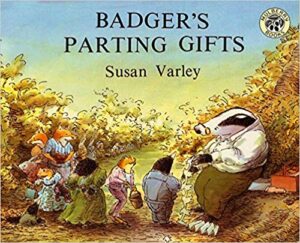 Badgers Parting Gifts by Susan Varlay
Badgers Parting Gifts by Susan Varlay
Badger’s Parting Gifts follows a community of animals as they grieve and then slowly remember all the wonderful memories after the death of an older member of their woodland community. This book is a good one for families experiencing the death of a grandparent and teaches kids to reflect as a part of the grief process. It is a bit wordy and would be best used for middle to late elementary aged kids, not preschoolers.
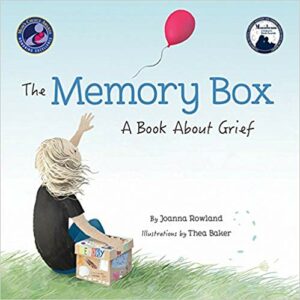 The Memory Box: A Book About Grief by Joanna Rowland
The Memory Box: A Book About Grief by Joanna Rowland
What happens to the love and relationship we share with someone who has died? The Memory Box is an award winning book that follows the journey of a young girl as she thinks about how to remember her loved one. This would be a good book to use after the initial shock of death, the funeral and to think through as a family how to honor and remember someone who passed.
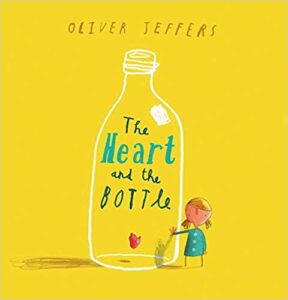 The Heart and the Bottle by Oliver Jeffers
The Heart and the Bottle by Oliver Jeffers
Most of the books on this list are geared toward preschoolers through late-elementary and while The Heart in the Bottle is a picture book it is one I would recommend to all ages. Specifically I would recommend this book to middle school and high schoolers, as it presents the abstract concept of keeping your feelings at arms length after the loss of a loved one. It can be used for small children but you will need to ask them questions about the picture and draw connections, because as is true with all Jeffers books the art tells its own subtle story. One of the connection questions I find helpful is “why did she put her heart in a bottle?” “Why did she want to do that?” “What happened when she put her heart and feelings away?” “How can we feel our feelings and not put them away?”
Like what you’ve read? Want more? Sign up for my twice a month newsletter (because we’re not spammy) and get original content you can’t find here on the blog. Reflections on faith and living, book recommendations and other good, nerdy fun. Sign up HERE.

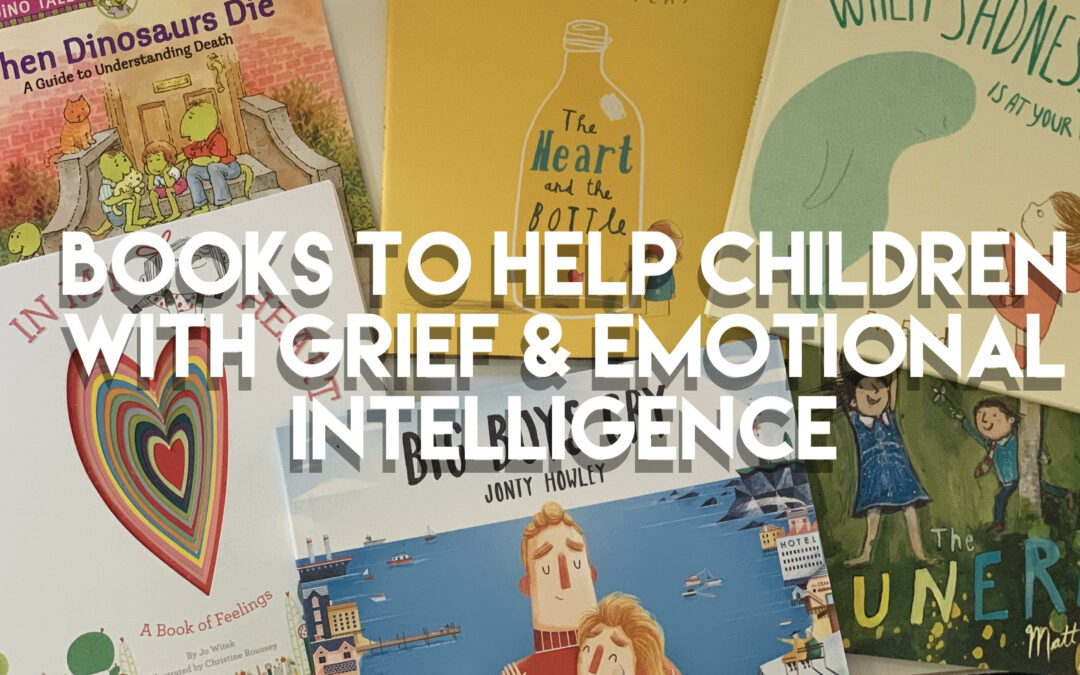

Fabulous list of books! So thrilled I rather “accidentally discovered!!”
Aw! Thanks, Kay.